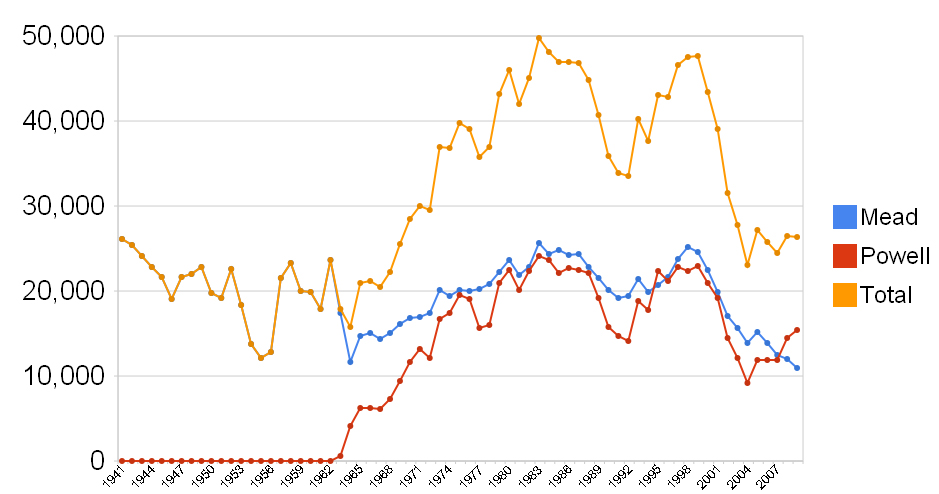It’s looking increasingly likely that we’ll see history this summer, of the dry, unpleasant sort, on Lake Mead.
With a meager snowpack in the Upper Green and Upper Colorado, the chances of a water surplus in the Upper Colorado River Basin that would allow an extra dollop of the wet stuff for Lake Mead have essentially vanished. The latest U.S. Bureau of Reclamation 24-month Colorado River System Operating Plan (pdf) puts the chances at just 3 percent that we’ll get a big enough blast of snow between now and April 1 to permit extra releases this year from Lake Powell down through the Grand Canyon to lift the levels of a dwindling Mead.
These numbers have been floating around in USBR forecasts for a couple of months, so what I’m telling you here isn’t new. But people in the water management community have cautioned me for years not to pay too much attention to forecasts until March. So now I’m paying attention.
According to the March USBR forecast for Lake Mead, out this week, the elevation of the reservoir’s surface by the end of June will have dropped to 1086.25 feet above sea level. If that number holds up, it will be the lowest Mead has been since May 1937, when it was first being filled.
I’ve written about this a bit loosely in the past, using total storage as my measure of “lowest since whenever“, but there’s been some ambiguity because most people use reservoir surface elevation. It’s a less meaningful measure in terms of water supply, but a quantity that can be more accurately measured. By that measure, Mead’s levels were lower in the winter of 1964-65, when Mead dropped to a surface elevation of 1088.14.
If the forecast holds up, all ambiguity about which measure we choose will be gone by his summer. And by Oct. 1, the end of our “water year”, Mead’s contents will have dropped below 10 million acre feet of water for the first time since it was filled in the ’30s.


Apparently the Central Arizona Project has begun suggesting that shortages on their system may begin occurring as soon as 2012. This would not really affect anyone’s water supply, but it would end much of the “excess pool” water that is currently recharged by our state Water Bank and used “in lieu” of groundwater by many farmers. It would be a real wake-up call around here if it comes to fruition.
Pingback: For Mead, Time’s Up : jfleck at inkstain